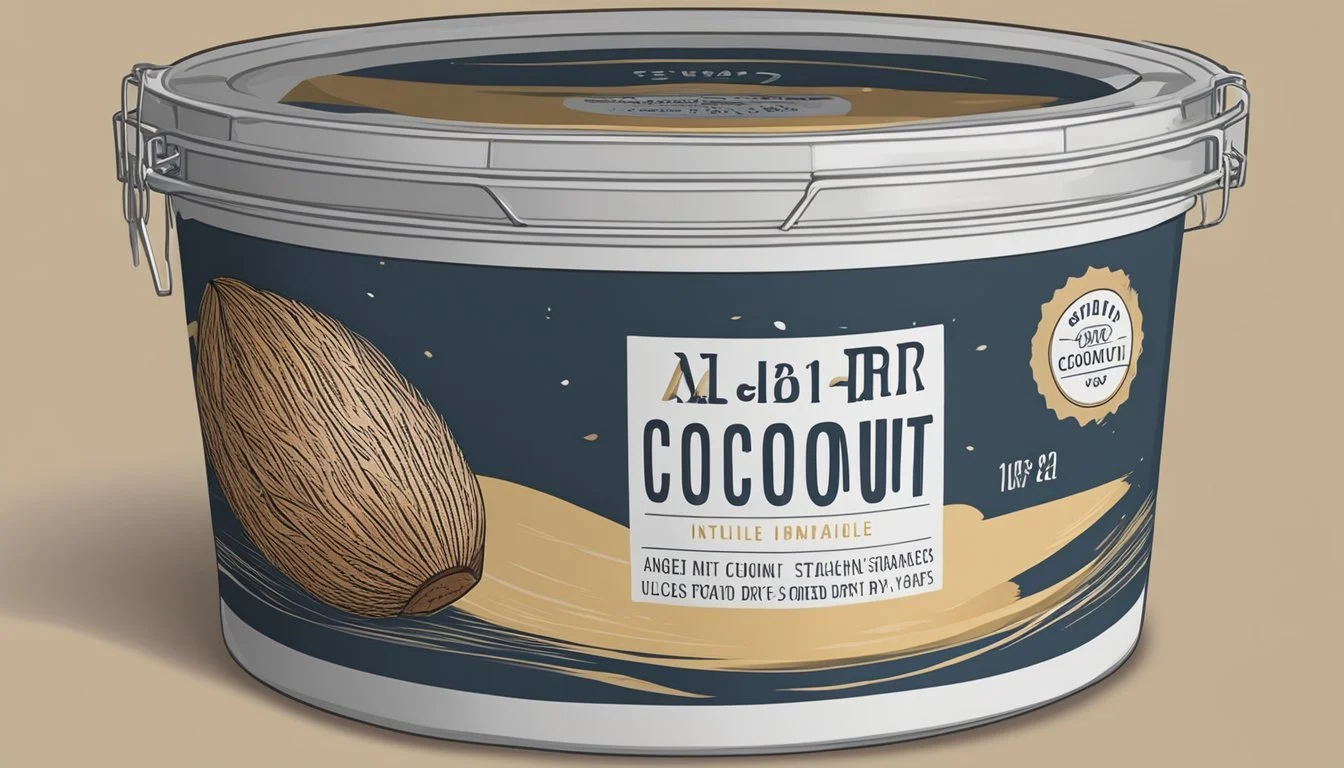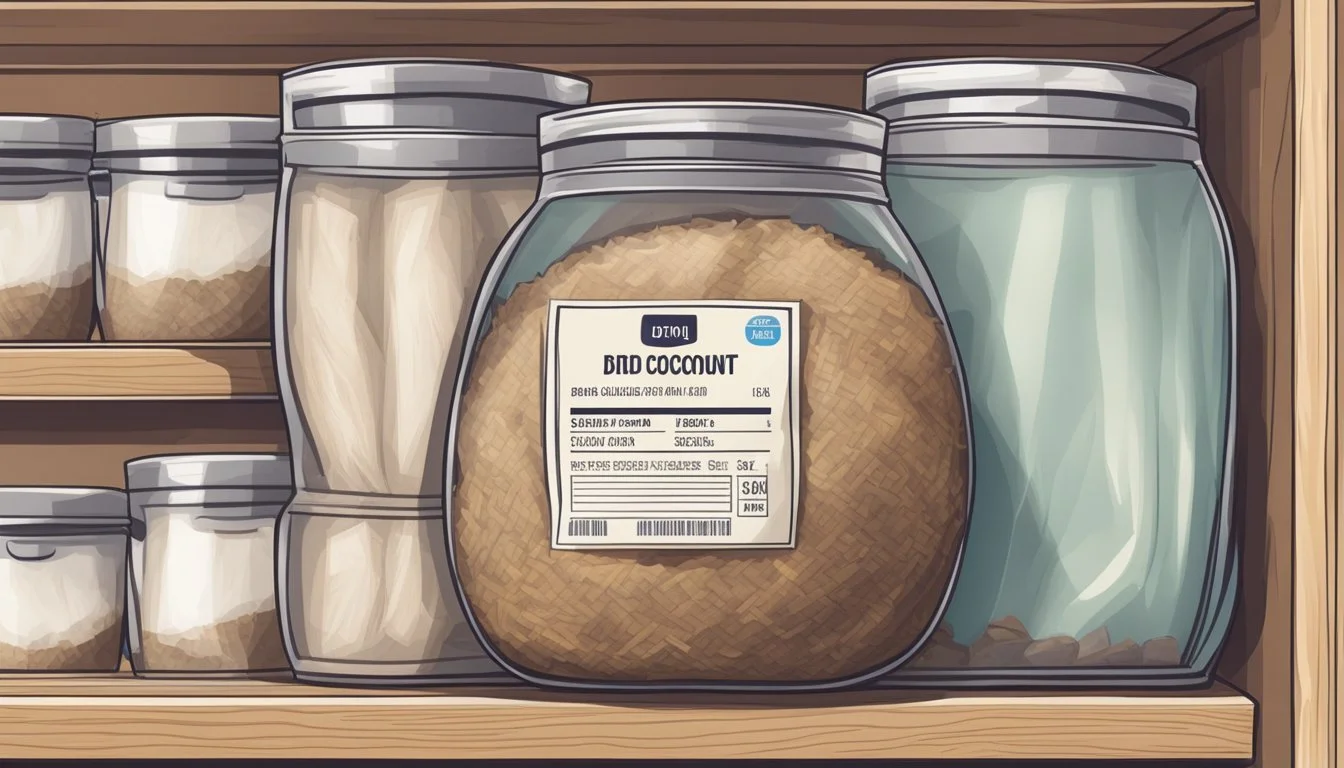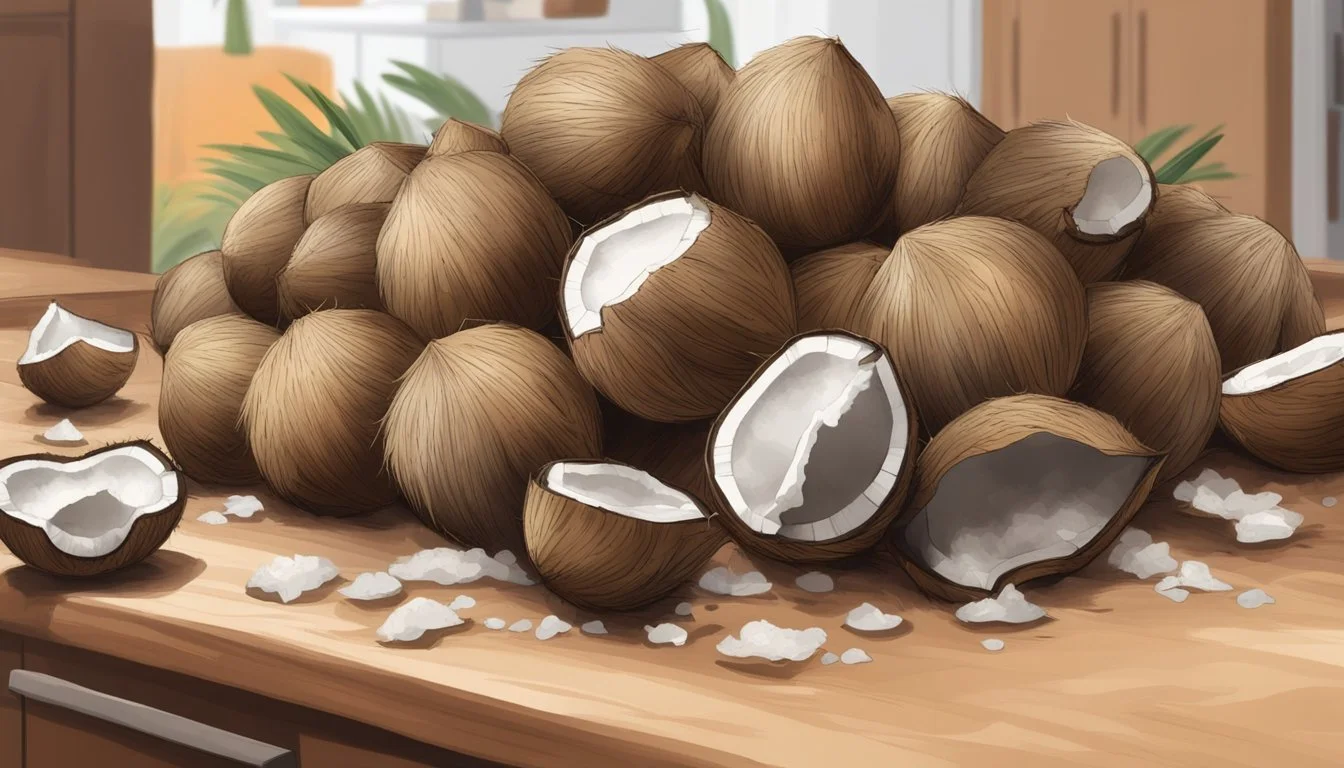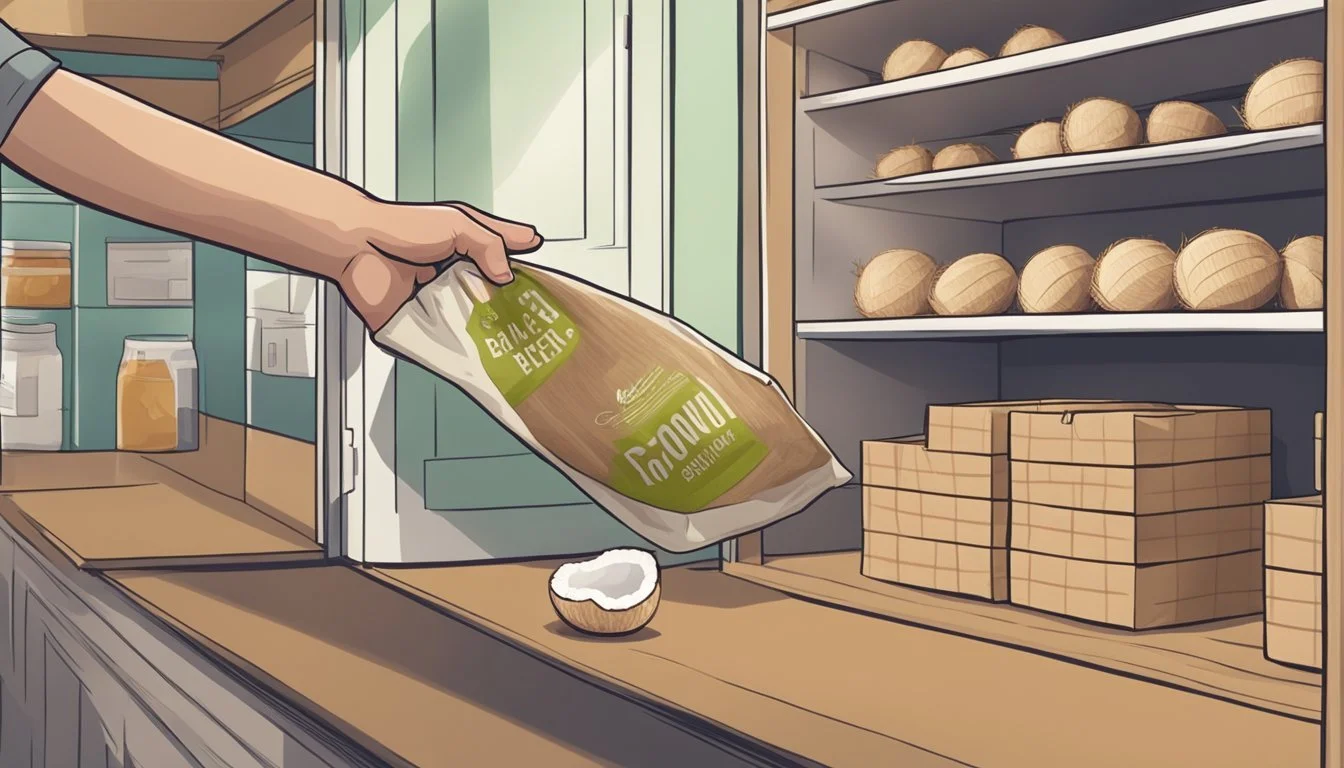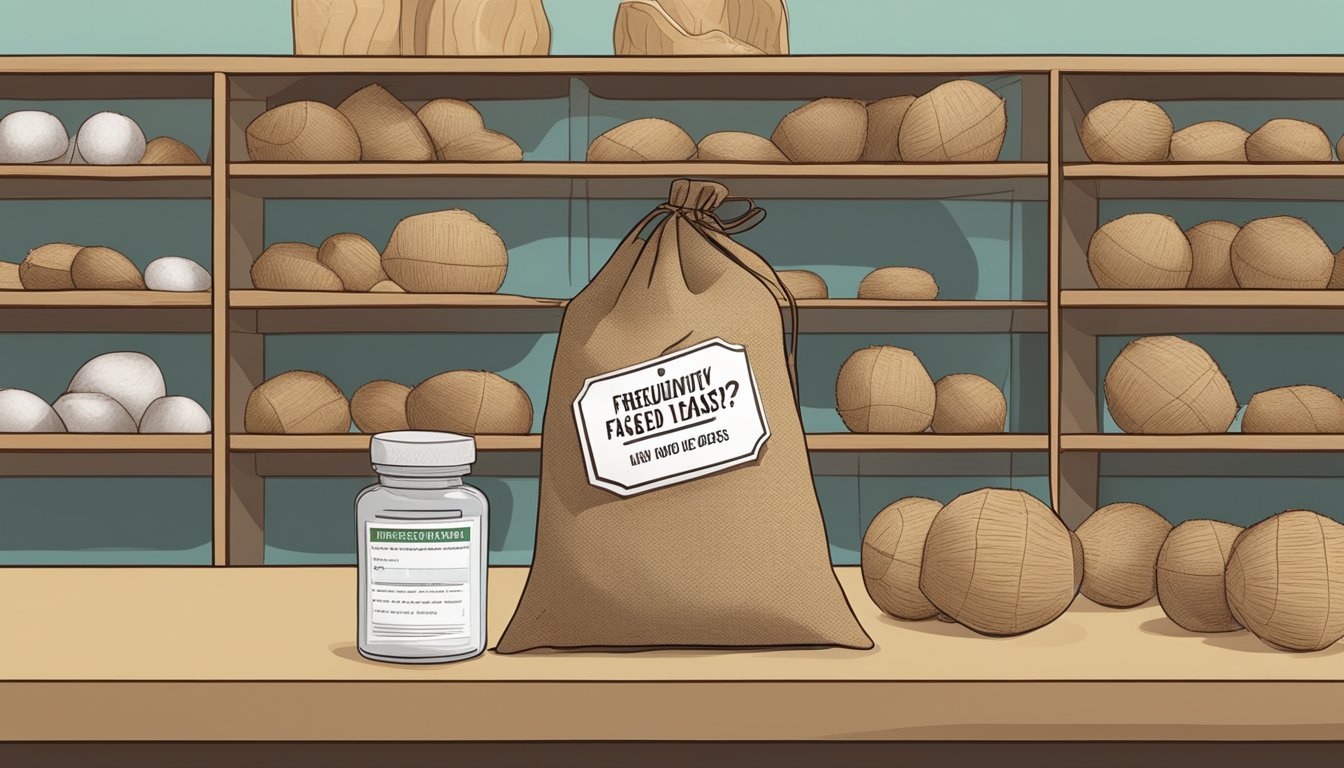How Long Does Dried Coconut Last?
Shelf Life and Storage Tips
Dried coconut is a versatile ingredient known for its long shelf life and is widely utilized in a variety of culinary dishes ranging from cakes and cookies to curries. Its longevity is a result of the dehydration process, which significantly reduces its moisture content, thus inhibiting the growth of mold and bacteria. When stored properly in an airtight container and placed in a cool, dry location, dried coconut can maintain its quality for up to 6 months. Preservation can be further extended by refrigerating or freezing the product.
Storage conditions are paramount in determining the shelf life of dried coconut. Exposure to moisture, air, or high temperatures can compromise the coconut's freshness, leading to rancidity or mold development. To ensure maximum freshness, it is essential to limit the dried coconut’s exposure to these elements. Once opened, the dried coconut's exposure to external conditions increases, but with careful storage in an airtight container, its quality can be preserved for an additional 6 months, with refrigeration potentially extending its usability even further.
Understanding Dried Coconut
When one explores the myriad forms of coconut available on the market, dried coconut stands out for its shelf stability and versatility in culinary applications. This section will elucidate the specifics of dried coconut, its nutritional profile, and how it compares to its fresh counterpart.
Definition and Types of Dried Coconut
Dried coconut comes in several forms, each suited to different culinary uses. The most common are:
Shredded coconut (how long does shredded coconut last?): Long, thin strips that are moist and have a soft texture.
Desiccated coconut: Finely ground coconut that is drier than shredded and has a more intense flavor.
Coconut flakes (how long do coconut flakes last?): Larger, flatter pieces of coconut that are ideal for decoration and baking.
Coconut chips: (how long do coconut chips last?) A crunchy, snack-sized variety, often toasted.
Each type of dried coconut has been dehydrated to remove moisture, thereby increasing its shelf life and enhancing its flavor intensity.
Simplify your life with the convenience of ordering shredded coconut online in just moments.
Nutritional Value and Health Benefits
Dried coconut is a rich source of nutrients. It is packed with fiber, healthy fats (including medium-chain triglycerides), and provides a moderate amount of calories. Although it contains less vitamin C than its fresh counterpart, dried coconut offers several health benefits:
Supports metabolism
Aids in maintaining healthy blood cholesterol levels
Promotes satiety and can help in weight management efforts when consumed in moderation
Nutrient Benefit Fiber Digestive health Healthy fats Metabolic support Calories Energy provision
Comparison to Fresh Coconut
While fresh coconut provides a higher water content along with coconut water, which is rich in electrolytes, dried coconut tends to be less perishable and more concentrated in flavor and calories. The fresh form may offer more vitamin C and a fresher taste, but lacks the extended shelf life and portability of the dried form. Key coconut-based products derived from the fresh form include:
Coconut cream (how long does coconut cream last?): Thick and rich, used in desserts and rich sauces.
Coconut milk: A blend of coconut water and flesh, used in cooking and beverages.
Coconut oil: Extracted fat, used for cooking, skin, and hair care.
In comparison, dried coconut is primarily used in baked goods, as a topping, or as an ingredient in granola (how long does granola last?) and trail mixes (how long does trail mix last?), showcasing its versatility in both sweet and savory dishes.
Proper Storage Methods
Ensuring that dried coconut remains fresh and extends its shelf life depends on adherence to optimal storage conditions and the use of appropriate containers.
Ideal Storage Conditions
Dried coconut thrives in environments that are cool, dry, and have a consistent temperature. The presence of moisture or exposure to heat can hasten spoilage. Therefore, it's recommended to store dried coconut in a cool, dark place such as a pantry or cupboard, away from any direct heat sources, such as stoves or sunlight.
Packaging and Airtight Containers
When storing dried coconut, airtight containers with tight-fitting lids are best. This type of packaging prevents air and moisture from compromising the quality of the coconut. For long-term storage, one might consider refrigeration or freezing, which can further extend its shelf life. Below is a quick reference guide for these storage methods:
Room Temperature Storage:
Container: Airtight with a tight-fitting lid.
Location: Cool, dark place.
Duration: Up to 6 months.
Refrigeration:
Container: Airtight with a tight-fitting lid.
Benefit: May extend shelf life beyond room temperature storage guidelines.
Freezing:
Container: Airtight, freezer-safe container or bag.
Duration: Can remain fresh for a year or possibly more.
Note: Divide into smaller portions for ease of use.
Shelf Life and Expiration
When considering the shelf life and proper storage of dried coconut, it's crucial to distinguish between the labeled expiration date and the actual freshness indicators based on storage conditions.
Average Shelf Life of Dried Coconut
Dried coconut, when stored properly, can last a considerable amount of time. The average shelf life generally falls within these parameters:
Pantry: Up to 6 months
Refrigerator: 6-8 months
Freezer: 6-8 months
These durations assume that the dried coconut is kept in an airtight container in a cool, dry place, far from sources of heat and moisture, which are detrimental to its freshness.
Expiration Date Versus Quality Indicators
The expiration date on a package of dried coconut serves as the manufacturer's estimate for peak quality. However, it doesn't always mean the product is inedible past this date. Shelf life can extend beyond the expiration date if the coconut has been stored properly. Consumers should look for the following quality indicators to assess whether dried coconut is still good to use:
Color: It should retain its natural white to off-white color.
Smell: Fresh dried coconut will have a sweet, slightly nutty scent. A rancid or sour smell suggests spoilage.
Texture: It should be dry and loose, not moist or clumped together.
Taste: When in doubt, a small taste can indicate freshness; it should not taste sour or bitter.
If the dried coconut shows any signs of mold, discoloration, or a bad odor, it should be discarded regardless of its storage time.
Signs of Spoilage
When assessing dried coconut for freshness, specific indicators can warn of spoilage. These include changes in smell, appearance, and texture which suggest the product may no longer be safe to consume.
Identifying Rancidity and Mold
Rancidity is often detectable by a distinct, off smell that emanates from the dried coconut. What was once a fresh, sweet aroma turns sharply unpleasant when the coconut oils breakdown and become rancid; it has a characteristic rancid smell that is unmistakable. Fun fact: a fresh smell is not the only sign of good quality dried coconut.
Alongside odor, visual inspection may reveal the presence of mold. This could manifest as discoloration or visible spots on the surface of the coconut—commonly green, black, or white in color.
How to Detect Spoilage in Coconut Products
To determine if a coconut product has spoiled, a tactile examination is essential. One should be alert for an unusual texture, such as excessive hardness or sogginess in dried coconut, which deviates from its typically crisp or flaky consistency. The occurrence of these textural changes often correlates with the aforementioned olfactory and visual signs of spoilage.
Consumption Safety Tips
When storing and consuming dried coconut, it is primarily important for one to ensure the product remains safe to eat. To guarantee this, recognizing when to discard dried coconut and understanding the dangers of consuming spoiled coconut are crucial.
When to Discard Dried Coconut
Dried coconut, when kept in a cool, dry place, generally has a shelf life of up to six months. However, the following signs indicate that it is no longer safe for consumption:
Odor: If the coconut emits a sour or off smell.
Texture: If it presents a slimy or damp texture.
Appearance: Any signs of mold or discoloration.
Taste: If one inadvertently tastes it and it seems rancid or off.
Using one's best judgment, it's advisable to err on the side of caution and discard if any of these signs are present.
Dangers of Consuming Spoiled Coconut
Consuming spoiled dried coconut poses several health risks, including food poisoning, which can provoke symptoms like nausea, vomiting, and diarrhea. Additionally, individuals with food allergies should be particularly wary, as the presence of mold can trigger allergic reactions or exacerbate existing allergies. Here are specific dangers:
Health Risks: Consumption of rancid coconut can lead to foodborne illnesses.
Allergies: Mold on spoiled coconut can cause or intensify allergic reactions.
It is essential to prioritize safety and dispose of any dried coconut that exhibits possible signs of spoilage to prevent health complications.
Utilization in Cooking and Baking
Dried coconut is a versatile ingredient, which can add a delightful texture and flavor to both sweet and savory dishes. It's especially useful in baking and can be refreshed to fully bring out its taste.
How to Refresh Dried Coconut Before Use
To revitalize dried coconut, one can gently toast it in a skillet over low heat, stirring constantly until it becomes fragrant. Alternatively, they can rehydrate it by soaking in warm water for a few minutes, then draining any excess liquid.
Incorporating Dried Coconut into Recipes
Dried coconut enhances numerous recipes, offering a distinct flavor and consistency. For baked goods such as cookies and cakes, it can be added directly into the batter or dough. In savory dishes and curries, chefs often sprinkle it atop for added crunch or blend it into sauces for depth. When baking, one should account for the additional dryness it might introduce and adjust other liquids in the recipe accordingly.
Extending the Life of Dried Coconut
Proper storage is key to extending the shelf life of dried coconut, whether it's shredded, flaked, or desiccated. By controlling exposure to air, moisture, and temperatures, one can significantly lengthen the period that dried coconut remains fresh and safe to consume.
Tips for Freezing Dried Coconut
Temperature: Keep dried coconut in the freezer where the temperature is constant and below 0°F to prevent freezer burn.
Packaging: Use airtight containers or freezer-safe bags to ward off air exposure that can lead to spoilage. Squeeze out excess air before sealing.
Preventive Measures to Avoid Spoilage
Storage Location: Store dried coconut in a cool, dry place away from high temperatures which can accelerate the spoilage process.
Moisture Control: Ensure containers are moisture-free before storage to prevent mold growth.
Organic Varieties: If opting for organic dried coconut without preservatives, be extra vigilant about storage conditions, as it may spoil more quickly than non-organic counterparts.
Additional Uses for Dried Coconut
Beyond its culinary popularity, dried coconut finds its place in a variety of non-food related applications and commercial products, contributing to its versatility.
Non-Culinary Uses of Dried Coconut
Natural Exfoliant: Dried coconut, especially in the form of finely ground coconut shells, is commonly used as a natural exfoliant in skincare. Its abrasive nature helps remove dead skin cells, promoting a smoother skin texture.
Craft Material: The fibrous texture of dried coconut shells, derived from the coconut palm, makes them excellent materials for creating decorative items and eco-friendly craft projects.
Dried Coconut in Commercial Products
Beauty Products: Dried coconut often features in beauty products for its coconut flavor and scent. Extracts from dried coconut flakes can be found in lotions, shampoos, and soaps, enhancing these products with a tropical aroma.
Health Snacks: Coconut clusters, which include dried coconut flakes as a key ingredient, are popular in the health snack category. They offer a satisfying crunch and are marketed as a wholesome, energy-boosting snack option.
Frequently Asked Questions
When it comes to dried coconut, consumers are most interested in understanding how to preserve its quality and what health precautions should be taken. This section addresses those key points, offering actionable advice.
Common Queries About Dried Coconut Storage and Shelf Life
Opened vs Unopened Dried Coconut:
Once a package of dried coconut—whether it's grated, shredded, or in flakes—is opened, it should be stored in an airtight container to extend its freshness. Unopened dried coconut usually lasts longer than opened, with a typical shelf life of up to 6 months beyond its printed expiration date.
Storing Sweetened vs Unsweetened Dried Coconut:
Sweetened dried coconut, due to its higher sugar content, may turn moldy faster than unsweetened varieties if exposed to moisture or stored improperly.
Unsweetened dried coconut, on the other hand, typically enjoys a longer shelf life and is less prone to becoming moldy, especially when kept in a cool, dry environment.
Storing Organic vs Non-Organic Dried Coconut:
Organic dried coconut might not contain preservatives, making proper storage in a dry and cool place critical to prevent spoiling.
Conversely, non-organic dried coconut could have added preservatives to extend its shelf life, but the same storage practices as for organic varieties are recommended.
Health and Safety Concerns with Dried Coconut Consumption
Consumption of Moldy Dried Coconut:
Eating dried coconut that has become moldy poses a health risk. It's important to inspect the dried meat of the coconut for any signs of spoilage or a sour smell before consuming.
Risk of Spoilage with Dried Coconut Meat vs Whole Coconut:
Dried coconut meat is more exposed to air and humid conditions which can lead to quicker spoilage compared to whole coconut.
Whole coconut usually has a longer shelf life, as the hard shell protects the meat and water inside from contaminants.
By adhering to proper storage methods and being mindful of these health concerns, consumers can safely enjoy dried coconut while preserving its quality and taste.



